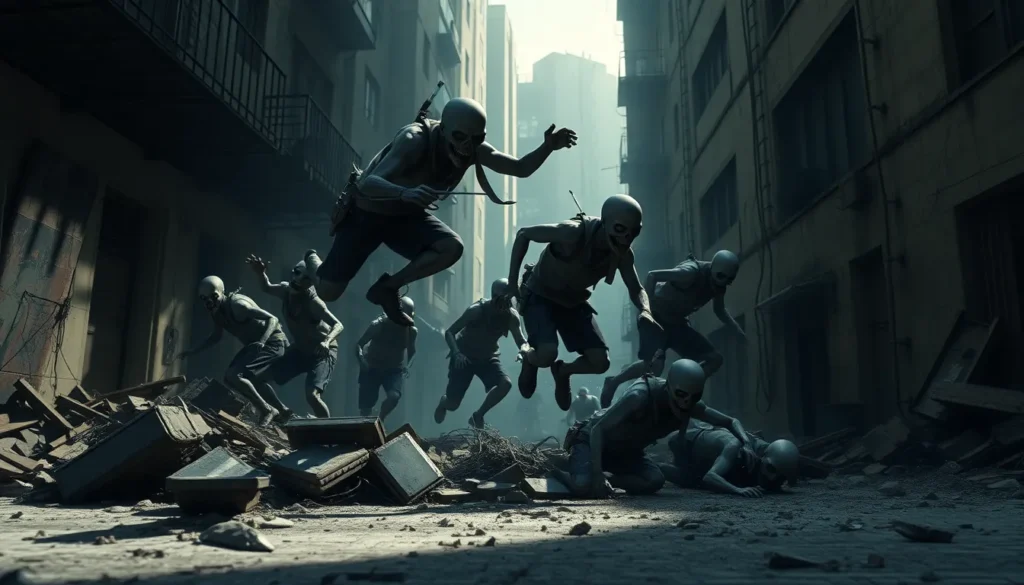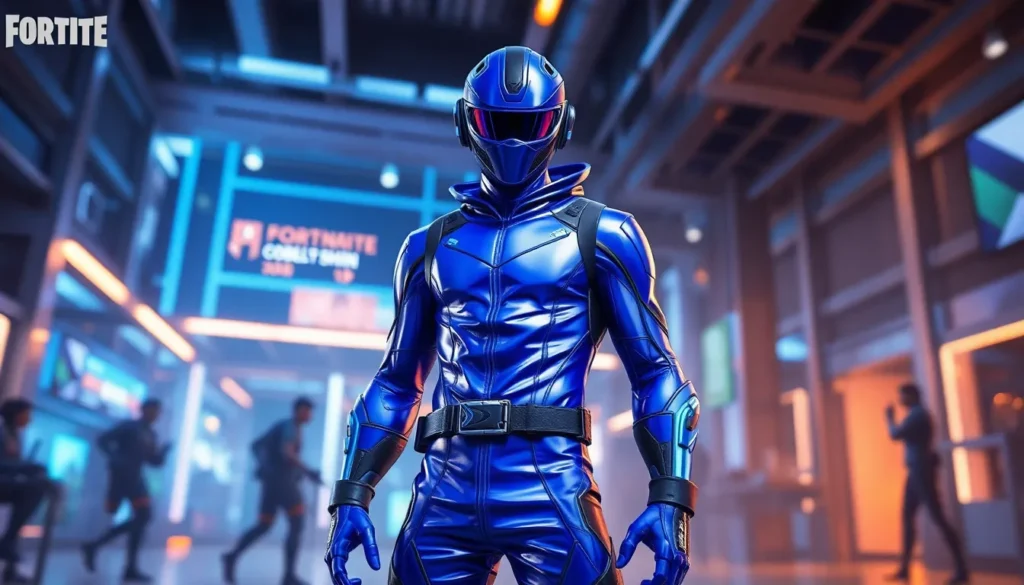Table of Contents
ToggleIn a world overrun by the undead, not all zombies are created equal. While most shamble around with a singular goal of munching on brains, elite zombie types take the horror to a whole new level. These are the brainiacs of the zombie apocalypse—think of them as the zombie equivalent of a Michelin-star chef, but instead of fine dining, they serve up chaos and terror.
From the cunning zombie strategist to the surprisingly spry parkour zombie, these elite types don’t just want to feast; they want to dominate. With their unique abilities and quirks, they add a twist to the typical horror narrative. Get ready to dive into the fascinating world of elite zombies that’ll have you laughing, screaming, and maybe even reconsidering your next horror movie marathon. Who knew the undead could be so entertaining?
Overview of Elite Zombie Types
Elite zombie types stand out in a world overrun by the undead. Their unique abilities differentiate them from typical zombies that merely seek to consume brains. Cunning strategists exemplify this difference, manipulating their surroundings and other zombies to gain an advantage. Agile parkour zombies bring a physical skill set, utilizing their agility to navigate environments that confound slower counterparts.
Some elites even possess enhanced speed, making them formidable opponents during encounters. The brute force zombie showcases an enormous physique that delivers overwhelming power. Other elite zombies exhibit intelligence, demonstrating basic problem-solving skills. Each type presents specific challenges, forcing survivors to adapt strategies for survival.
Unique characteristics in elite zombies elevate tension and fear, making them fascinating figures in horror narratives. Their motivations transcend mere sustenance; they display desires for domination and control. Recognizing elite zombies transforms the way stories unfold, as their complexity adds layers of intrigue.
Individuals facing these zombies must stay vigilant and develop tactical approaches. Adaptation becomes crucial, since elite types often work together, forming powerful factions. Strategies might include decoy tactics or creating defensive barriers to counter the elite’s strengths. They underscore the necessity for creativity in survival scenarios.
Fans of horror appreciate the comedic elements often intertwined with elite zombies. These types sometimes exhibit exaggerated traits that ignite humor, contrasting the grim circumstances. Overall, elite zombies reshape narratives, ensuring the horror genre remains fresh and engaging.
Characteristics of Elite Zombie Types

Elite zombies stand apart from typical undead creatures due to their unique traits. They showcase a blend of physical prowess and behavioral sophistication.
Physique and Abilities
Elite zombies often possess enhanced strength, speed, and agility. Their physiques allow them to overcome obstacles and maneuver through environments efficiently. Increased muscle mass contributes to their brute force, threatening survivors more than standard zombies. Certain types display remarkable healing abilities, making them challenging to defeat. Intelligence manifests in their problem-solving skills, enabling them to devise strategies against humans. Some elite zombies can even utilize weapons or tools, heightening the danger they pose during encounters.
Behavioral Patterns
Survival tactics of elite zombies differ from those of their common counterparts. They exhibit organized group behavior, coordinating attacks and diversifying their methods. Attention to detail stands out in their approach, as these zombies adapt to the environment and learn from human actions. Elite types demonstrate cunning through ambush tactics or psychological manipulation, exploiting survivors’ weaknesses. While they pursue flesh, their overarching goal often includes establishing dominance over territories. Players and survivors face increasingly intricate challenges as they navigate confrontations with these sophisticated threats.
Popular Elite Zombie Types in Media
Elite zombies vary significantly, with each type bringing unique strengths to the horror genre. Fast zombies and armored zombies stand out among popular elite types, showcasing their distinct abilities.
Fast Zombies
Fast zombies often embody agility, speed, and enhanced reflexes. Unlike typical slow-moving undead, these creatures sprint towards their prey with alarming quickness. Increased speed enables them to outmaneuver survivors, creating intense chase scenarios. Filmmakers frequently portray fast zombies in iconic movies like “28 Days Later,” where their rapid attacks amplify tension and fear. Game developers also capitalize on this type, incorporating fast zombies in titles like “Left 4 Dead,” intensifying players’ challenges. Their unpredictable movement patterns compel survivors to think on their feet, adding depth to the horror experience.
Armored Zombies
Armored zombies present a unique challenge due to their physical protection and resilience. Their tough exteriors often consist of materials like metal or reinforced clothing, allowing them to absorb more damage. Media representations, such as “Dead Rising,” highlight their durability, requiring players to strategize more effectively during encounters. Survivors face difficulty penetrating their defenses, which limits effectiveness of conventional weapons. Creative approaches, such as targeting weaker joints or employing explosive devices, become essential for defeating armored zombies. This combination of toughness and intimidation enhances the overall horror atmosphere, pushing narratives in exciting new directions.
Strategies for Battling Elite Zombie Types
Surviving encounters with elite zombies requires strategic planning and adaptability. Employing effective tactics can significantly enhance chances of survival.
Team Tactics
Coordinated efforts among team members increase effectiveness during zombie confrontations. Designating roles based on individual strengths optimizes team performance. For example, a scout can locate threats, while others provide cover fire. Establishing clear communication ensures team members can react swiftly to changing situations. Additionally, developing escape plans for unexpected encounters keeps everyone prepared. Using distractions can redirect elite zombies, buying time for a strategic retreat. Working together is crucial when facing coordinated zombie groups, as their ability to ambush raises the stakes significantly.
Weaponry and Gear
Selecting appropriate weapons is vital for engaging elite zombies. Firearms with high accuracy and stopping power are preferred, especially against armored types. Using melee weapons with durability, such as machetes and axe tools, offers versatile close-combat options. It’s wise to equip gear that enhances mobility, allowing quick positioning during encounters. Crafting makeshift barricades from available materials can slow down the zombies, providing critical moments to regroup. Utilizing items like flashlights and noise-makers can help create distractions, luring elite zombies away from vital locations. Prioritizing weapon upgrades keeps them effective against evolving threats, ensuring preparedness in a world of relentless danger.
Elite zombies redefine the landscape of horror, bringing complexity and excitement to the genre. Their unique traits and abilities challenge survivors, demanding innovative strategies for survival. As these formidable foes evolve, they push narratives into uncharted territories, blending fear with humor and suspense.
Fans of the genre can appreciate the diverse portrayals of elite zombies in media, from the swift and agile to the heavily armored. Each type adds depth to the horror experience, making encounters more thrilling. The need for strategic planning and teamwork becomes paramount, emphasizing that survival in a world dominated by elite zombies requires not just bravery but also cunning and creativity. Embracing these challenges ensures that the fight against the undead remains engaging and ever-evolving.




